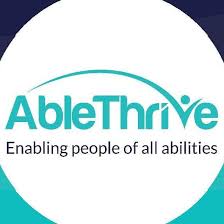|
(This blog tells my family's story. To see more, click "blog" at the top of this webpage.)
After Beth’s high school graduation, a nonstop summer swept us away. Swim training fit in-between time with friends. She wore new contact lenses, pleased when she practiced and figured out how to put them in and out on her own with uncooperative hands. In Columbus, Beth helped Coach Peggy with an adapted demonstration for Ohio Swimming coaches. From there, we drove across town to her second Youth Leadership Forum (YLF) for students with a disability. As a staff assistant instead of a delegate, Beth made it her first completely independent trip of five consecutive days. No small feat with a C6-7 spinal cord injury, even with an accessible hotel room. The day after YLF ended, she had one night at home before her flight from Cleveland to Washington, DC, for her first National Youth Leadership Network conference for youth with a disability. “It was my first independent flight,” Beth said. “I’m not sure why, probably just something new and being nervous, but I got teary when Mom left me at security.” On the jetbridge, Beth instructed staff on how to lift her to the narrow aisle chair. They waited while she broke her leg spasms on her own. She helped with the seatbelts and held her arms tucked in as they pushed her down the aisle of the plane to her seat. They stowed her wheelchair underneath with the luggage, minus the cushion and sideguards. When the plane landed, she waited until the rest of the passengers left, reclaimed her wheelchair, and met her contact in baggage claim. A van with a lift waited to take her to the conference. I breathed easier after her phone call from a nice hotel. I had stressed needlessly. Her experience in DC made the stress of the solo flight worthwhile. “When I represented Ohio at the national conference,” Beth said. “I came to understand that the Americans with Disabilities Act and the work of the early pioneers in disability rights was far from over.” “My generation has grown up since the ADA so it’s easy to take it for granted, because we didn’t have to fight for it. Learning from the people who did have to fight and listening to their stories was empowering.” Next: An unexpected new role on a college team!
2 Comments
(This blog tells my family's story. To see more, click "blog" at the top of this webpage.)
Beth added the song Jump by Van Halen to her music mix at Peggy’s suggestion. At local USA Swimming summer meets, many swimmers wore ear buds and held iPods as they waited to compete. Beth was the only one in a wheelchair—with the perk of a lap to carry the iPod on top of her towel and goggles—but not the only teenager with a disability. In my support role as the Adapted Chairperson of the Ohio Swimming Board of Directors, I talked to other swimmers with visual challenges and limb differences. The teenagers with a disability at those USA Swimming meets had no competition, with no one else in their classification in attendance. They swam in full heats with able-bodied peers who always touched the ending wall before them. Each of them, my daughter included, raced the clock. At a meet in Canton, Ohio, I cheered as Beth reset three American Records and added a brand-new one in the 200 Individual Medley. During a SAK practice at the outdoor pool, dark clouds brewed. I waited at the pool, knowing that the approaching storm would trigger Beth’s tornado anxiety. At the first distant rumblings, she asked to get out of the water. She couldn’t get out and into her wheelchair by herself. Peggy stuck to her club policy and kept the practice running until the siren blared, indicating lightning in the vicinity. That was the only time Beth was not happy with her coach. A time she remembered and teased Peggy about later. Beth wheeled through rain to the car as lightning streaked the sky. We couldn’t get home fast enough. Her trauma abated after she immediately checked the computer to confirm the absence of tornadoes in Tiffin. An Ohio girl, tornadoes didn’t trigger anxiety for me, but other things bothered me. I worried about my job, about the residents at the group home I managed and what might happen next. At home, Beth’s transition to college dominated my thoughts. And living in a strange city by myself in the fall. (This blog tells my family's story. To see more, click "blog" at the top of this webpage.)
Later in June, the Greece buzz abruptly fizzled. A phone call from the head of U.S. Paralympics overruled the earlier plans at Trials. He told Beth all swimmers must stay the entire month of September in Athens. No exceptions. She handed me the phone at my request and I attempted to reason with him. When I hung up the phone, we hugged and cried. If only I could make things better, a wish I had made many times. The phone call triggered a decision Beth had made months before. She would not wait a full school year to start college at Harvard, so she immediately gave up her slot on the Athens team to someone else. The fun preparations ended, replaced with the chore of telling family, friends, and reporters the bad news. We tried to focus on the silver lining. Now, she could start at Harvard on time and attend freshman orientation. Discouraged, Beth followed Peggy’s advice and set goals for the next four years. The plan included staying on the U.S. National Team, attending at least three Paralympic meets a year, and swimming on her own at Harvard, following Peggy’s workouts. Beth didn’t expect to practice with the college’s swim team. In four years, she did expect to master the forward freestyle and achieve an out of reach American Record in the 50 free, the hardest in the S3 women’s classification. Beth’s detailed plan led up to an ultimate goal: the 2008 Paralympics in China as a member of Team USA. The Beijing Paralympics would take place in September, a few months after her graduation from Harvard. She would attend graduate school for medical research or law. “I’ve already decided to postpone grad school for a year,” Beth told a reporter in 2004. “Nothing’s going to stop me this time. I want to medal in China.” (This blog tells my family's story. To see more, click "blog" at the top of this webpage.)
Beth’s third swimming summer began with a task she could put off no longer. She called and talked to the GTAC coach about her decision to change teams. Stressful, despite our gratitude for Beth's first club team and the practicality of swimming with a hometown coach. Peggy coached her individually during one-on-one sessions in addition to regular Seneca Aquatic Klub practices. Beth swam with familiar faces from the high school team and formed new friendships with Peggy’s daughters, both college swimmers who helped with the club team. The close-knit, small-town swim team celebrated with a thrilled Beth after she swam her first mile in one practice: 1,760 yards, over 70 lengths of the 25-yard pool. I watched her finish the feat, marveling at what she accomplished with no leg function. In intensive care after the accident, none of us—not even Beth—imagined her in a pool by herself. Or floating. Or swimming actual strokes. Or competing. Or achieving her first mile in one practice, the first of many. On a beautiful day in mid-June, family and friends gathered at our home. John and I hosted a party for Ben and Beth, both graduating with honors. Ben earned two degrees, in English and physics, from Ohio State. I set out Beth’s summer scrapbook and other memorabilia. A plain binder held many awards and scholarship letters, including one for $5,000 from the ChairScholars Foundation, renewable for four years. A reference letter from a high school staff favorite, Mrs. Roberts, summed up the four years since Beth's spinal cord injury. “The mild-mannered, quiet, bright little girl we met as an incoming freshman has grown into an assertive yet humble young woman. Beth is in a wheelchair but is by no means wheelchair bound." |
Cindy KolbeSign up for my Just Keep Swimming Newsletter by typing your email address in the box. Thanks!Categories
All
Archives
November 2022
|





 RSS Feed
RSS Feed











